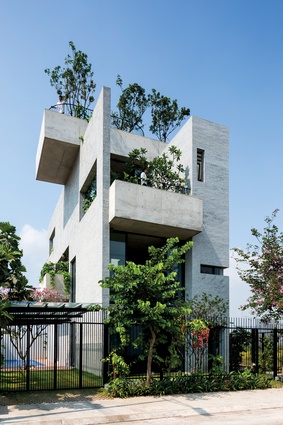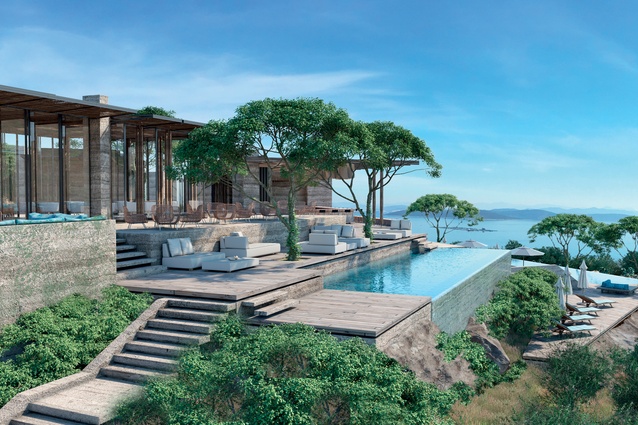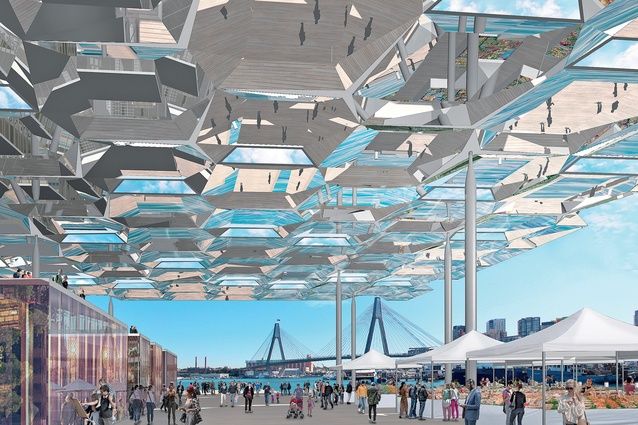World Architecture Festival 2017
New Zealand architects did us proud at the World Architecture Festival in Berlin late last year. Here, Justine Harvey speaks with a few of the Kiwis who attended the event.
Two New Zealand houses, one built and one conceptual, snapped up major awards at last year’s World Architecture Festival (WAF), which ran from 15 to 17 November in Berlin.
Bach with Two Roofs in Golden Bay, by Nelson-based practice Irving Smith Architects, won the Villa – Completed Buildings category. Sited in a eucalypt forest, the house was repaired and refinished after a cyclone in 2014, with a shade building and new elements that can be repositioned as the forest grows back.

Queenstown House by Auckland-based Monk Mackenzie took out the the House – Future Projects category. This elongated six-bedroomed house design hugs the landscape, creating a bridge across a seasonal flood zone.
Both projects were presented by their architects to the WAF Super Jury, consisting of James Timberlake from Philadelphia practice KieranTimberlake, Christoph Ingenhoven from Ingenhoven Architects in Berlin, Wong Mun Summ of Singapore firm WOHA, Ellen Van Loon from OMA in Rotterdam and Ian Ritchie from UK studio Ian Ritchie Architects.
Auckland-based practice Fearon Hay Architects – veterans of the WAF programme with numerous awards received in previous years – was recognised again this year. The practice was Highly Commended in the Religion – Completed Buildings category for its Bishop Selwyn Chapel in Parnell, Auckland, which also recently won one of four major awards at the New Zealand Architecture Awards.
Warren and Mahoney’s own premises in Auckland’s Wynyard Quarter, formerly the Mason Bros. building, were awarded Highly Commended in the Creative Re-Use category of the 2017 INSIDE World Festival of Interiors, the sister event to WAF.
According to the festival organisers, there was greater participation this year than there has been in previous years, with 924 entries received from projects located in 68 countries around the world. Among them were 14 New Zealand projects from nine practices.
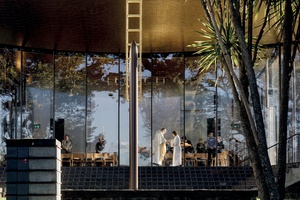
Jeremy Smith, from Irving Smith Architects, presented two projects at WAF and also spent two days judging hotel and leisure-led facilities in both Future Projects and Completed Buildings categories.
“I don’t know why I judged hotels; they must think I spend a lot of time in hotels!” jests Smith. “I ran from presenting to judging and back again. It was non-stop from start to finish but I really enjoyed it. There is a massive collection of different cultures, buildings and approaches, which is really interesting. Not everyone has English as a first language so a lot of judging is trying to understand exactly what they’ve done, why they’ve done it and what the implications are.”
Smith suggests that the presenters discussed the same types of problems, and this made it easier to compare projects. “In both the hotel categories, we saw a lot of people trying to build individual boutique hotel rooms covering whole hillsides of beautiful parts of the Mediterranean so, obviously, there were a lot of masterplanning issues. ‘How can you place this many rooms on this hill and still make it beautiful for everyone?’ These projects are on a much bigger scale than what we see here in New Zealand.
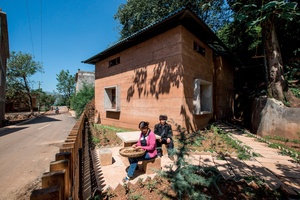
“There were massively different projects, from large scale to one that had only two rooms, which won the Hotel and Leisure – Completed Buildings category. Called the Vegetable Trellis hotel [by Cong Sinh Architects], basically, it was a private hotel for a business in Ho Chi Minh City, whereby clients could come and stay in this little hotel room and the rest of it was this nice place to grow vegetables! It is very beautiful and is a great idea for an urban area that could be applied throughout the city. The hotel is situated in a little laneway that the owner decided to give back to the community so his hotel would benefit from everyone hanging out in this little park growing vegetables. It’s a simple idea but socially aware – green cities can also be edible cities!”
Smith and partner Andrew Irving have presented projects at WAF a number of times now. “We’ve realised that you have to work out how you present and what suits your scheme. The jury I had was great; they were fun and interested so it was a chat, really. But the questions were all pretty full-on and you’re definitely thinking on your feet.”
Hamish Monk from Monk MacKenzie tagged the WAF trip to Berlin onto an excursion to China as part of an Auckland Council delegation to Guangzhou.
“Auckland has a tripartite agreement with Los Angeles and Guangzhou, in which the urban designers, planners and businesses meet to foster relationships and compare notes on city planning,” explains Monk. “Guangzhou meant long days, coupled with a bit too much fun, so we had to try and recover before we arrived at WAF.
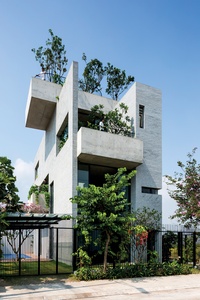
“We had three schemes to present on different days, with the first few days largely spent in the hotel trying to gather our thoughts to ensure our presentations were in order. On the first day of WAF, Dean [Mackenzie, his partner] was up presenting Turanganui Bridge and I was up the next day with Edition and the house in Queenstown.
“All our presentations seemed to go quite well but there are always a few curly questions that catch you off guard. Personally, public speaking is not my natural habitat so it was about getting through the presentations without losing my mind, taking a deep breath and preparing for the onslaught of questions. The right answers seem to come easily after the event, when you’ve had a chance to reflect.
“It seemed important to have the right supporting material as well. In some instances, we found ourselves trying to explain a complex part of the building with a pared-down set of drawings. And, because the presentation is only 10 minutes long, you have to be very selective about what is and isn’t included.
“After the results were read out, there were big celebrations with a bunch of architects/designers and then the long haul back to Auckland to face all the things we had been neglecting whilst away.”
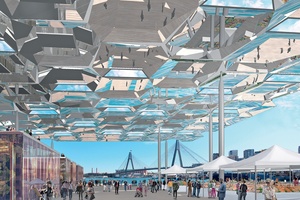
Jeff Fearon from Fearon Hay Architects also presented three projects at WAF with partner Tim Hay, and, despite having presented to the Super Jury on previous occasions, explains: “It’s still a difficult thing to do. The first presentation for the Kauri Timber Building went well but we were right at the end of the day and started receiving questions before the end, so it went into a discussion about the materials used, like ‘why isn’t the new building in timber?’ Our answer was received alright but it wasn’t an amazing Q&A session following that.
“Forest House was really well received and there were some good questions about the clients, the way they use it and our design response, so that felt like an engaged and positive presentation. And, then, with the (Bishop Selwyn) Chapel, the jury was quite quiet. We received few questions, really – just about which wall of glass opened up and a couple of technical questions about what the building did – and that was the end. So I felt that we could have had more engagement with the jury on that one.
“Every project has its own story about why it happened and you have 10 minutes to get that across. If it connects with those particular jurors on the day, then you’ll probably receive some really good engagement – but, if it doesn’t, then tough! That’s kind of how it works. We were hopeful that we’d get further with the Chapel but we were happy to come away with some kind of recognition at that level.”





